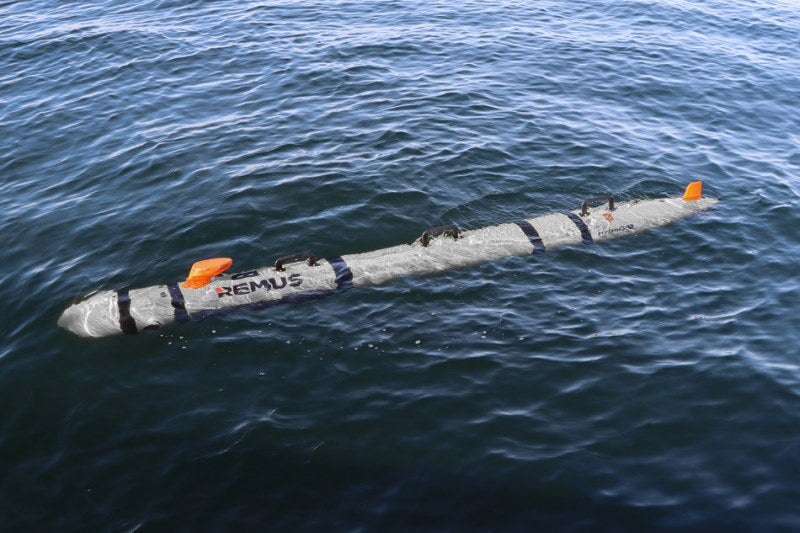
Marine robotic systems manufacturer Hydroid has delivered the first REMUS 300 unmanned underwater vehicle (UUV) prototype to the US Navy.
The prototype unit was delivered to the Naval Information Warfare Center (NIWC) through the Defense Innovation Unit (DIU), a United States Department of Defense (DoD) organisation.

Discover B2B Marketing That Performs
Combine business intelligence and editorial excellence to reach engaged professionals across 36 leading media platforms.
REMUS 300 is designed to provide additional modularity to enable the operator to integrate new software, as well as reconfigure payloads, sensors and energy modules.
The diameter of the REMUS 300 is 7.5in, while the depth rating has increased to 305m compared to the REMUS 100.
The two-man portable UUV also complies with the navy’s Modular Open Systems Architecture (MOSA) and Unmanned Maritime Autonomy Architecture (UMAA) standards.
Hydroid president Duane Fotheringham said: “The REMUS 300 is a game-changer for the small UUV class. It’s a culmination of everything we’ve learned by delivering over 400 REMUS UUVs over the past 17 years.

US Tariffs are shifting - will you react or anticipate?
Don’t let policy changes catch you off guard. Stay proactive with real-time data and expert analysis.
By GlobalData“The modularity and open architecture will make future developments easier than ever to integrate, ensuring REMUS will continue to be one of the most advanced UUVs on the market.”
REMUS 300 is equipped with multiple energy options with field changeable, environmentally sealed energy modules.
The UUV features GPS, Wi-Fi and an Iridium antenna, as well as a high-speed thruster for high current operations.
It also benefits from a dual-frequency 900kHz / 1,800kHz side-scan sonar and a removable 1TB hard drive.
The prototype will be evaluated over the next year for the US Navy’s Next Generation Small-Class UUV (SUUV) programme.
REMUS 300 is slated to become available for commercial orders by the second quarter of this year.
Huntington Ingalls Industries (HII) signed an agreement earlier this month to acquire Hydroid from Kongsberg Maritime. The deal is expected to close in this quarter and is valued at $350m.





